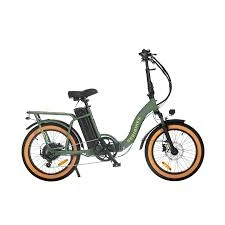
- Afrikaans
- Albanian
- Amharic
- Arabic
- Armenian
- Azerbaijani
- Basque
- Belarusian
- Bengali
- Bosnian
- Bulgarian
- Catalan
- Cebuano
- Corsican
- Croatian
- Czech
- Danish
- Dutch
- English
- Esperanto
- Estonian
- Finnish
- French
- Frisian
- Galician
- Georgian
- German
- Greek
- Gujarati
- Haitian Creole
- hausa
- hawaiian
- Hebrew
- Hindi
- Miao
- Hungarian
- Icelandic
- igbo
- Indonesian
- irish
- Italian
- Japanese
- Javanese
- Kannada
- kazakh
- Khmer
- Rwandese
- Korean
- Kurdish
- Kyrgyz
- Lao
- Latin
- Latvian
- Lithuanian
- Luxembourgish
- Macedonian
- Malgashi
- Malay
- Malayalam
- Maltese
- Maori
- Marathi
- Mongolian
- Myanmar
- Nepali
- Norwegian
- Norwegian
- Occitan
- Pashto
- Persian
- Polish
- Portuguese
- Punjabi
- Romanian
- Russian
- Samoan
- Scottish Gaelic
- Serbian
- Sesotho
- Shona
- Sindhi
- Sinhala
- Slovak
- Slovenian
- Somali
- Spanish
- Sundanese
- Swahili
- Swedish
- Tagalog
- Tajik
- Tamil
- Tatar
- Telugu
- Thai
- Turkish
- Turkmen
- Ukrainian
- Urdu
- Uighur
- Uzbek
- Vietnamese
- Welsh
- Bantu
- Yiddish
- Yoruba
- Zulu
Nov . 17, 2024 20:21 Back to list
Tips for Choosing the Perfect Mountain Bike for Your Adventures
The Ultimate Guide to Buying Mountain Bikes
When it comes to outdoor adventures, mountain biking stands out as one of the most exhilarating activities. With the wind in your hair and the rugged terrain beneath your tires, it’s a fantastic way to connect with nature and enjoy a good workout. If you’re considering diving into the world of mountain biking, the first crucial step is choosing the right bike. In this guide, we’ll explore the key factors to consider when buying mountain bikes.
1. Understand the Different Types of Mountain Bikes
Mountain bikes are not one-size-fits-all. They come in various types, each designed for specific terrains and riding styles. The main categories include
- Cross-Country (XC) Bikes Lightweight and efficient, ideal for long distances and climbing. - Trail Bikes Versatile and capable, perfect for a balance of climbing and descending. - All-Mountain Bikes Designed for rugged trails, these bikes provide better suspension and stability for technical rides. - Downhill Bikes Heavier with superior suspension, built to conquer steep descents.
2. Consider the Suspension System
Suspension is vital for comfort and control. There are three types of suspension systems
- Hardtail These bikes have front suspension but no rear shock, making them lighter and more efficient on smooth trails. - Full-Suspension Offering both front and rear suspension, these bikes absorb bumps efficiently, providing a smoother ride on rougher terrains. - Rigid No suspension, suited for flat terrain and experienced riders.
buy mountain bikes

3. Frame Material Matters
Mountain bikes are made from various materials, including aluminum, carbon fiber, and steel. Aluminum frames are popular for their lightweight properties and affordability. Carbon fiber frames are lighter and stiffer, but they come at a higher price. Steel frames offer durability and a smoother ride, but they tend to be heavier.
4. Wheel Size
Wheel size impacts handling and stability. Common sizes include 26, 27.5 (650B), and 29. Larger wheels roll over obstacles more easily and are great for stability, while smaller wheels are more agile, making them ideal for technical trails.
5. Fit and Comfort
Ultimately, the best mountain bike for you is one that fits comfortably. Take the time to test ride various models. Pay attention to the bike’s size, geometry, and how it feels while riding. Your comfort will heavily influence your enjoyment and performance on the trails.
Conclusion
Buying a mountain bike is an exciting journey that opens up a world of adventure. By understanding the different types of bikes, suspension systems, and other key features, you’ll be well-equipped to make an informed decision. Whether you’re a beginner or an experienced rider, the right mountain bike can significantly enhance your outdoor experience. So gear up, hit the trails, and enjoy the ride!
-
The Ultimate Kids' Four-Wheeler Experience
NewsJul.09,2025
-
The Ultimate Guide to Mountain Bikes: Gear Up for Your Ride
NewsJul.09,2025
-
The New Age of Cycling: Electric Bikes for Every Rider
NewsJul.09,2025
-
The Best Kids Bicycles: Ride in Style and Safety
NewsJul.09,2025
-
The Best 3-Wheel Scooters for Kids: Fun, Safety, and Adventure
NewsJul.09,2025
-
Revolutionize Your Ride: Affordable Electric Bikes
NewsJul.09,2025
-
Finding the Perfect Mountain Bike for Every Rider
NewsJul.09,2025



